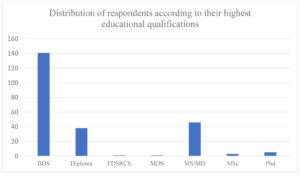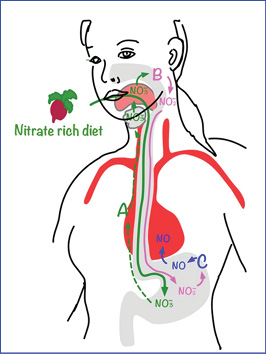STOMATOLOGY EDU JOURNAL 2021 Volume 8 Issue 1
TABLE OF CONTENTS
GUEST EDITORIAL
 Dear readers,
Dear readers,
The year 2020 is over and it was completely dominated by the Covid-19 pandemic, which as we all know started on December 30st 2019 in Wuhan [1]. In our minds we look back at a very bad year with more than 1.8 million people that passed away due to the infection that may end up being utterly deadly, especially if individuals are exposed to additional risks. We were all faced with severe restrictions which have profoundly changed our lifestyles, from the obligation to wear masks and keep social distancing to skipping social gatherings, large events, and travelling. Altogether a bad year and a big crisis. However, in every crisis there is a chance as well. The positive thing is that the world population is now talking about prevention and is sensitized to everything that is prevention. Furthermore, we can widely see how people may react to preventive measures by either accepting them or rejecting them by hiding behind abstruse theories like claiming the pandemic is an illusion created by the mighty and powerful. (read more)
Jean-François Roulet
EDITORIAL
Value of randomized controlled trials
 Dear readers,
Dear readers,
In the globalization era technology is rapidly advancing in all the fields of dentistry and there is an urgent need to collect longitudinal clinical data to be shared in the world dental community. Hundreds of laboratory studies performed following different techniques are continuously published in international peer-reviewed journals (with Impact Factor) and they are useful to provide comparative data among several products within the same category. Such investigations can potentially predict to some extent the clinical performance of new materials and techniques. However, in vivo trials based on predictable and reproducible protocols should always precede the large-scale clinical use of recently introduced products. Clinical validation is indeed a cornerstone of ‘Evidence-Based Dentistry’. Such requirement is understandably strict with new adhesive materials, but it should be even more cogent when dealing with implant surgery techniques. Based on the Helsinki Declaration on the ethical principles for medical research involving human subjects, a clinical research protocol should preliminarily receive the written approval of the pertinent Ethical Committee, and should clearly state the study’s inclusion and exclusion criteria. Patients should be fully informed on the objectives of the research, as well as on the methods and possible related risks. The patients’ written informed consent to the study should be obtained. All the researchers performing clinical studies should conform to this policy and the editorial boards of scientific journals should verify that all the requirements are met. (read more)
Marco FERRARI
ORIGINAL ARTICLES
- COMMUNITY DENTISTRY
DOI: https://doi.org/10.25241/stomaeduj.2021.8(1).art.1
 The first case of Corona Virus Disease-19 (COVID-19) caused by the severe acute respiratory syndrome corona virus 2 (SARS‑CoV‑2) was reported in Wuhan, China in December 2019 [1]. Even though scant attention was paid to the disease at the time, within weeks it became a serious health concern leading to an epidemic spread in China, prior to the subsequent pandemic spread the world over. COVID-19 was declared a public health emergency of international concern by the World Health Organization on 30th of January 2020 [2]. As of this writing, in December 2020, the number of COVID-19 cases worldwide has surpassed 75 million, with over 1.6 million deaths [3]. In Sri Lanka, the first case of COVID-19, was reported in a Chinese tourist, in January 2020, and the first, communally transmitted patient reported two months later; at the time of writing (December 2020), Sri Lanka has over 36,000 confirmed cases, with 165 reported deaths. SARS‑CoV‑2 primarily spreads via droplets produced by coughing, sneezing, and talking. When droplets are large and heavy, they usually fall to the ground or onto surfaces, but the smaller particles, called aerosols, are entrained in the air for prolonged periods of approximately 3 hours if the ambient circulation is stagnant [4,5]. (read more)
The first case of Corona Virus Disease-19 (COVID-19) caused by the severe acute respiratory syndrome corona virus 2 (SARS‑CoV‑2) was reported in Wuhan, China in December 2019 [1]. Even though scant attention was paid to the disease at the time, within weeks it became a serious health concern leading to an epidemic spread in China, prior to the subsequent pandemic spread the world over. COVID-19 was declared a public health emergency of international concern by the World Health Organization on 30th of January 2020 [2]. As of this writing, in December 2020, the number of COVID-19 cases worldwide has surpassed 75 million, with over 1.6 million deaths [3]. In Sri Lanka, the first case of COVID-19, was reported in a Chinese tourist, in January 2020, and the first, communally transmitted patient reported two months later; at the time of writing (December 2020), Sri Lanka has over 36,000 confirmed cases, with 165 reported deaths. SARS‑CoV‑2 primarily spreads via droplets produced by coughing, sneezing, and talking. When droplets are large and heavy, they usually fall to the ground or onto surfaces, but the smaller particles, called aerosols, are entrained in the air for prolonged periods of approximately 3 hours if the ambient circulation is stagnant [4,5]. (read more)
Citation: Jayasinghe RD, Jayasinghe RM, Hettiarrachchi PVKS, Samaranayake LP. Sri Lankan dental professionals’ knowledge of the Corona Virus Disease-19 (COVID-19): a questionnaire survey. Stoma Edu J. 2021; 8(1):7-17
- DENTAL MATERIALS
BIOSURFACE PROCESSING WITH ROLE IN IMPROVING THE OSSEOINTEGRATION OF THE ORAL IMPLANT

DOI: https://doi.org/10.25241/stomaeduj.2021.8(1).art.2
The direct and lasting connection between living and reshaped bone that defines the osseointegration of the implant [1,2,3] is determined by the tissue compatibility that influences the healing process of recovery and remodelling, immediately after implantation. Bone healing in the post-implantation period involves a series of cellular and extracellular biological processes at the bone-implant interface, completed with the formation of new bone [4,5,6]. The first reactions result in the formation of a clot interface, the biological processes being further controlled by growth and differentiation factors released by blood cells. They undergo morphological and biochemical changes as an effect of contact with the biosurface [7,8,9].
(read more)
Citation:Vasilescu VG, Vasilescu E, Sîrbu V, Ciocan LT. Biosurface processing with role in improving the osseointegration of the oral implant.
Stoma Edu J. 2021;8(1):18-25
- ORTHODONTICS
AN ASSOCIATION BETWEEN DIMENSIONS AND BRIDGING OF THE SELLA TURCICA AND DENTAL ANOMALIES

DOI: https://doi.org/10.25241/stomaeduj.2021.8(1).art.3
The sella turcica is a depression in the middle line of the upper surface of the sphenoid bone. For orthodontists, the sella is a well-known anatomical structure on the scalp, because it is the central reference landmark in the evaluation of craniofacial morphology and the maxillomandibular relationship.
The name sella turcica, Latin for “Turkish saddle,” derives from the structure’s similarity in shape to a saddle used by the Turks [1]. The anterior border of the sella turcica is marked by the tuberculum sella and the posterior border is marked by the dorsum sella [2]. The pituitary gland is located in the sella turcica, and two anterior and posterior clinoid processes project over the pituitary fossa [2].
During the embryological period, the sella turcica is the key point for the migration of the neural crest cells to the frontonasal and maxillary developmental fields [3].(read more)
Citation: Akan S, Akar NK. An association between dimensions and bridging of the sella turcica and dental anomalies. Stoma Edu J. 2021;8(1):26-32.
- COMPUTERIZED DENTAL PROSTHETICS

DOI: https://doi.org/10.25241/stomaeduj.2021.8(1).art. 4
The preservation of natural teeth is one of the goals of modern dentistry, resulting in a progressively increasing demand for partial dentures [1]. With the propagation of age, replacement of missing teeth is a common patient need [2]. Elderly patients are usually accompanied by general health issues, which also affect the dental treatment plan [3]. Therefore, the suggested dental treatment plans should be realistic, straightforward, versatile, aiming to restore the lost functionality and cover the esthetic needs of the patient. Removable partial dentures, either traditional or implant-supported are prostheses that meet these requirements. The prosthodontic treatment of a Kennedy class II partially edentulous maxilla is demanding in terms of biomechanics and esthetics. A removable partial denture attached on an implant-supported bar might be an alternative treatment plan to a traditional partial denture [4]. (read more)
Citation: El Bachaoui S, Politis C. Osteosynthesis materials in maxillofacial surgery: rejection, removal, corrosion and particle detection rates. Stoma Edu J. 2021;8(2):114-119
- DENTAL ERGONOMICS

DOI: https://doi.org/10.25241/stomaeduj.2021.8(1).art.5
Proper ergonomics in dentistry have been viewed as contributory aspects in the prevention of musculoskeletal injury and the working distance with magnification should allow the operator to maintain optimum posture [1]. Many dental students and clinicians may not be aware of what constitutes the correct ergonomics posture. The importance of an early introduction to proper ergonomics may be beneficial to a clinician’s career, for both comfort and longevity. The cause of musculoskeletal disorders (MSD) is multifactorial and can develop from as little as a single event, or more likely through repetitive occupational movements over time. However, risks for the development of MSD have been identified among dental students with reports of pain in the back and neck regions during training [2]. (read more)
Citation: Hussein HS, Anderson S, Matick M, Greene A, Zmiyiwsky MP, Abdulhameed NF. A standardized method to determine the proper working distance for dental magnification utilizing neutral ergonomics positioning. Stoma Edu J. 2021;8(1):45-51.
Authors:
Hind S. Hussein: ORCIDiD | ResearchGate
Shelby Anderson: ORCIDiD
Melissa Matick: ORCIDiD
Avery Greene: ORCIDiD
Mark P. Zmiyiwsky: ORCIDiD
Nader F. Abdulhameed: ORCIDiD | Publons | ResearchGate | PubMed | WOS
- OCCLUSION and TMJ

DOI: https://doi.org/10.25241/stomaeduj.2021.8(1).art.6
Throughout the history of medicine Mastication has triggered the interest of researchers due to its complexity, its functions and behavioral significance. Mastication is the process by which food is broken down by teeth into smaller pieces, mixed with saliva into a bolus and made suitable for swallowing. The quality of mastication and its efficiency are crucial even beyond the individual ability to perform chewing strokes and to swallow. Oral health has been held responsible for, or related to, a number of systemic conditions. For instance, poor oral health has been investigated in the past as an independent risk factor and association for systemic diseases such as myocardial infarction, coronary disease and diabetes [1-3]. This whole issue has reached a higher and wider awareness only in recent times, although earlier studies concerning these associations had already highlighted the importance of maintaining a satisfactory oral and dental status for the good of systemic health and for the consequences on Public Health [4]. (read more)
Citation: Tanteri G, Tanteri C, Slavicek G. Condylographic recording of masticatory function: explorative study on occlusal parameters and chewing performance with natural food and a standard food model. Stoma Edu J. 2021;8(1):52-64
Authors:
Giulia Tanteri: ORCIDiD | Publons | ResearchGate | Google Scholar | Scopus | WOS
Carlotta Tanteri: ORCIDiD
Gregor Slavicek: ORCIDiD | Publons | ResearchGate | WOS
REVIEW ARTICLE
- ORAL MEDICINE
THE INFLUENCE OF THE ORAL MICROBIOME ON GENERAL HEALTH

DOI: https://doi.org/10.25241/stomaeduj.2021.8(1).art.7
The human body hosts many complex microbial communities that influence functions like digestion, metabolic regulation, immune response, and there
is evidence that a dysfunctional microbiome promotes the development of diseases [1]. Our oral microbiome comprises at least 772 prokaryotic species, second in diversity only to that of the gut. The oral cavity exhibits a large number of surfaces and crevices to which aerobe and anaerobe microbes can adhere, forming biofilms. These extracellular biofilms are found everywhere from the buccal mucosa to the tooth surfaces, dorsum of the tongue and gingival sulci. In addition to bacteria, diverse forms of fungi, viruses, protozoa and archaea are found as part of the normal oral microbiome [2]. Various studies have shown that an unbalanced microflora not only correlates with diseases of the oral cavity, but those of other organ systems, too [3]. (read more)
Citation: Citation: Rohr JFC, Rozenblats A, Selga G, Čēma I. The influence of the oral microbiome on general health. Stoma Edu J. 2021;8(1):66-76
CASE REPORT
- ORAL AND MAXILLOFACIAL SURGERY
A RARE CASE REPORT OF SYPHILIS MIMICKING AN OROPHARYNGEAL NEOPLASM

DOI: https://doi.org/10.25241/stomaeduj.2021.8(1).art.8
An increasing incidence of syphilis is inherently related to an increasing number of atypical presentations of the disease. Syphilis is on the rise and, with the increase in cases, there has been an increase in different and unusual presentations of the disease. Since 2010, reports of syphilis incidence rates in the European Union (EU) have been ever increasing. This trend seems to be accelerating, predominantly amongst male homosexuals [1]. Syphilis is a sexually transmitted infection caused by Treponema pallidum, a well-known pathogen that can cause pathology in the maxillofacial area. Although there is little literature describing oropharyngeal treponema pallidum infections as mimicking an oropharyngeal squamous cell carcinoma (OPSCC), it has been described in rare cases [2]. This case report presents such a case. (read more)
Citation: Kalantary S, Politis C, De Vos W, Stevens S, Van Genechten M, Vercruysse Jr H, Van Hemelen G. A rare case report of syphilis mimicking an oropharyngeal neoplasm. Stoma Edu J. 2020;7(4):78-82
Authors:
Sofia Kalantary: ResearchGate
Christophe Politis: ORCIDiD | ResearchGate
Wouter De Vos: ResearchGate
Sten Stevens
Maarten Van Genechten: ResearchGate
Herman Jr Vercruysse: ResearchGate
Geert Van Hemelen
PRODUCT NEWS
A new disinfection device – DeactivateTM by Xenex
Since the onset of the COVID-19 pandemic, researchers and manufacturers of products and equipment have been frantic to develop new methods, products and equipment to effectively limit the causes. PubMed has over 111,190 articles published on COVID-19, of which over 1,820 articles on dentistry, to which one can add the over 5 articles published by the Stomatology Edu Journal (Stoma Edu J). WHO, FDI, ERO, ADA and other professional associations have developed a series of rules on protection against COVID-19, itineraries to be followed by patients, protection of patients and medical staff, disinfection of surfaces and equipment. Xenex Disinfection Services Inc., a global provider of UV-based disinfection strategies and solutions, is known for LightStrike™ Germ-Zapping rob robots, which are used by many medical institutions around the world to the room no-touch disinfection. Following the COVID-19 pandemic, LightStrike robots are now used in airports, schools, hotels, sports arenas, police stations and correctional facilities, convention centers and more to quickly disinfect rooms and large areas. (read more)
Florin-Eugen Constantinescu
DOI: https://doi.org/10.25241/stomaeduj.2021.8(1).prodnews.1


